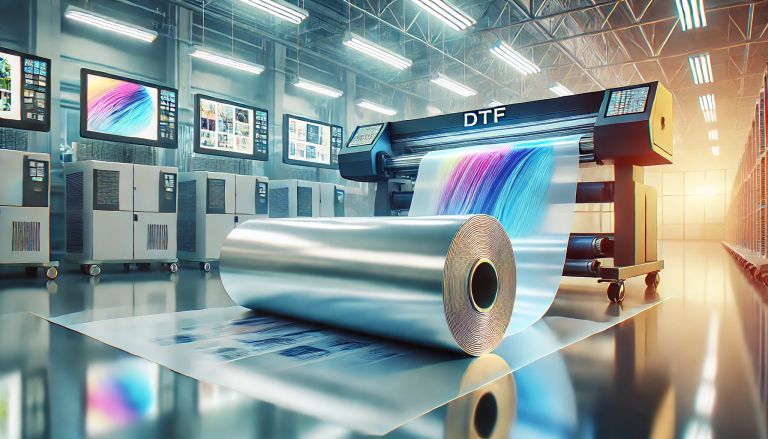“Exploring UV-DTF Printing: Is It Better Than Vinyl?” -MAXDTF- UV Magic Decal Manufacturer, UV DTF AB Paper Wholesale, Made in China
In the world of printing and graphic design, technological advancements have brought forth a myriad of options for producing stunning visuals on various substrates. Among these options, UV-DTF (Direct to Film) printing has emerged as a promising alternative to traditional methods like vinyl printing. Both methods have their unique characteristics, benefits, and limitations. In this blog post, we’ll delve into the world of UV-DTF printing and examine whether it stands as a superior choice compared to vinyl printing.
Understanding UV-DTF Printing:
UV-DTF printing is a relatively new and innovative technology that combines elements of direct-to-garment (DTG) printing and heat transfer. The process involves using a specialized printer that directly prints UV-curable ink onto a thin heat-sensitive film. Once the design is printed, it’s cured using UV light, and then the printed design is transferred from the film to the desired substrate, such as fabric, ceramics, plastics, and more.
Benefits of UV-DTF Printing:
- Versatility: UV-DTF printing can be applied to a wide range of substrates, including fabrics, leather, wood, and even curved surfaces. This versatility opens up creative possibilities for designers and businesses to explore.
- Durability: UV-cured inks are known for their exceptional durability. They resist fading, scratching, and wear, making them suitable for applications that require longevity, such as outdoor signage or clothing.
- Vibrant Colors: UV inks offer a broader color gamut, which means they can reproduce more vibrant and accurate colors compared to traditional methods.
- Fine Details: UV-DTF printing can reproduce intricate details and sharp lines with precision, making it a preferable choice for complex designs.
- Eco-Friendly: UV-curable inks are generally considered more environmentally friendly due to their low VOC emissions and reduced waste.
Vinyl Printing:
Vinyl printing, on the other hand, involves creating a design on a vinyl material and then transferring it onto the desired substrate using heat and pressure. This method has been popular for a long time and offers its own set of advantages:
- Cost-Effective: Vinyl printing is often more cost-effective for small runs and simple designs, making it a popular choice for individual orders and small businesses.
- Variety of Finishes: Vinyl comes in various finishes, such as glossy, matte, and metallic, allowing for diverse design outcomes.
- Ease of Application: Vinyl application can be relatively straightforward, especially for those familiar with the process.
Choosing Between UV-DTF and Vinyl Printing:
The choice between UV-DTF and vinyl printing largely depends on the specific requirements of the project, budget, and desired outcomes. Here are some considerations to help you decide:
- Complexity of Design: If your design involves intricate details, gradients, or a wide range of colors, UV-DTF printing might offer superior results.
- Durability: If your project demands longevity and resistance to wear and tear, UV-DTF printing is likely a better choice due to its durable UV-cured inks.
- Substrate: Consider the material you’re printing on. UV-DTF printing is more versatile when it comes to substrate options.
- Cost: For smaller budgets or simple designs, vinyl printing could be the more economical choice.
- Environmental Concerns: If eco-friendliness is a priority, UV-DTF printing might be more suitable due to its environmentally friendly inks.
In Conclusion:
Both UV-DTF printing and vinyl printing have their own strengths and weaknesses, catering to different needs and preferences. While UV-DTF printing offers versatility, durability, and vibrant colors, vinyl printing remains a cost-effective and straightforward option for simpler projects. The decision ultimately boils down to the project’s requirements, budget constraints, and desired outcomes. As technology continues to evolve, we can expect further innovations in the printing industry, offering even more choices for creators and businesses alike.



